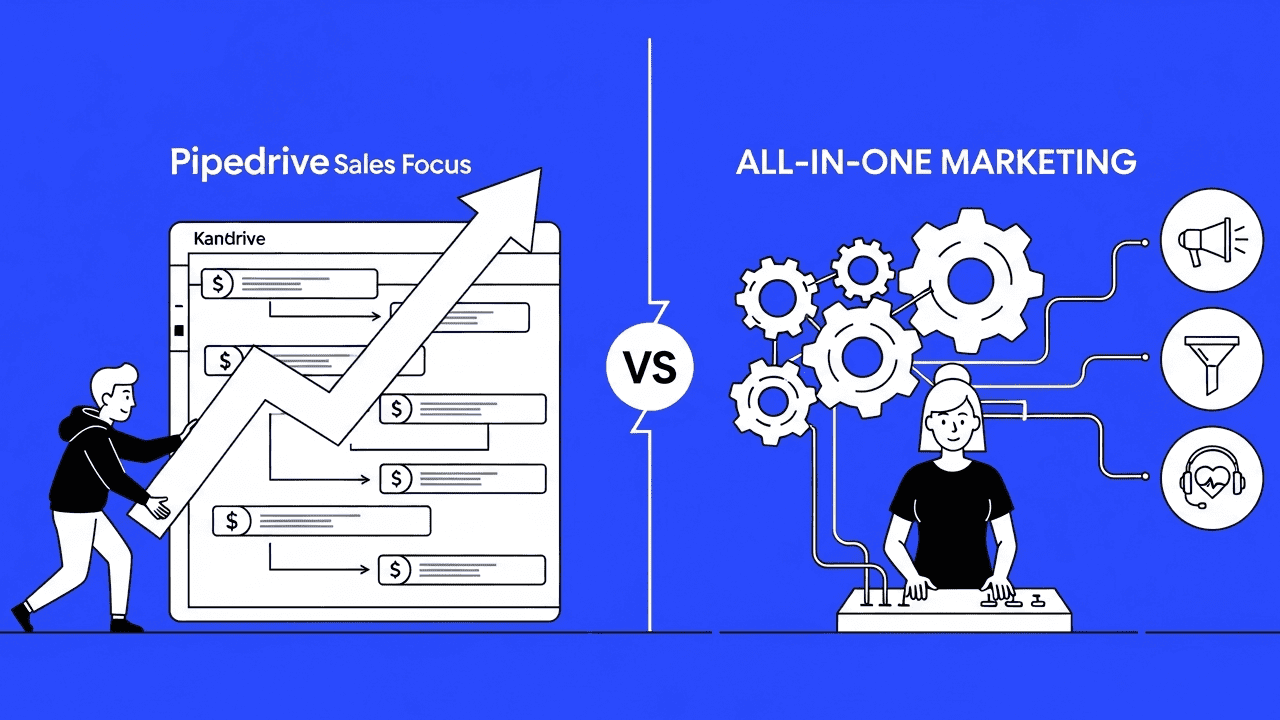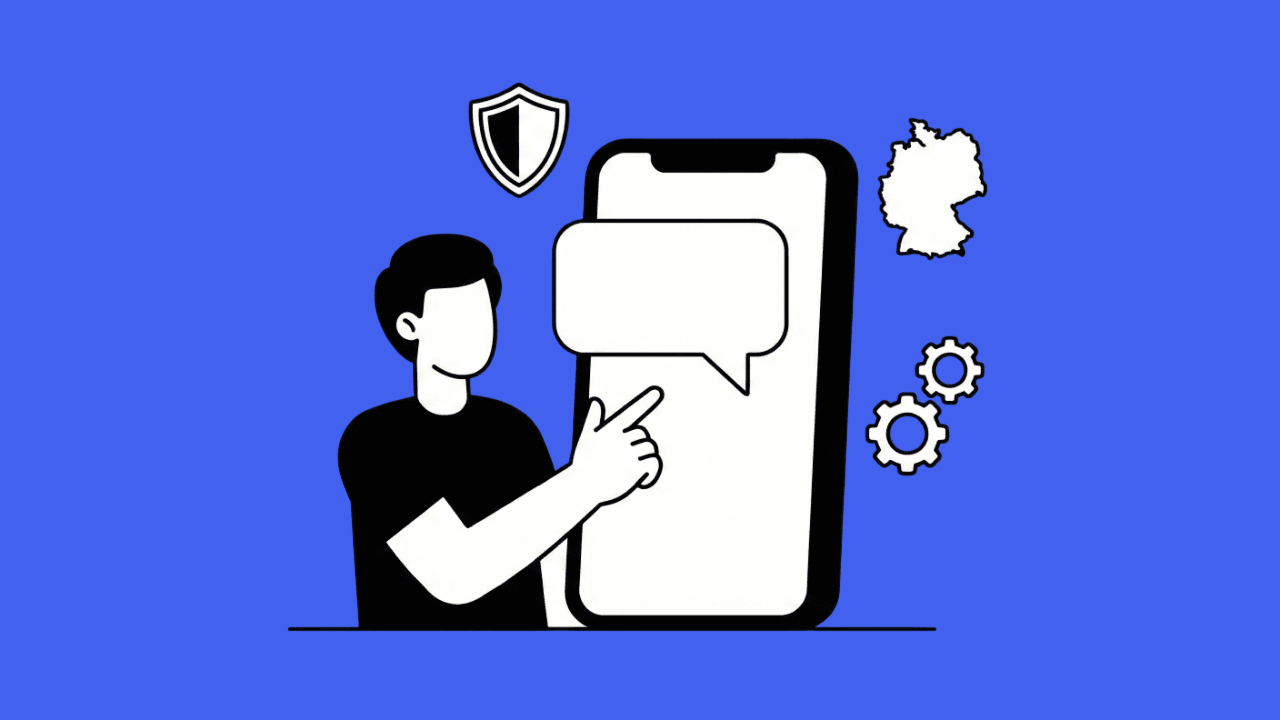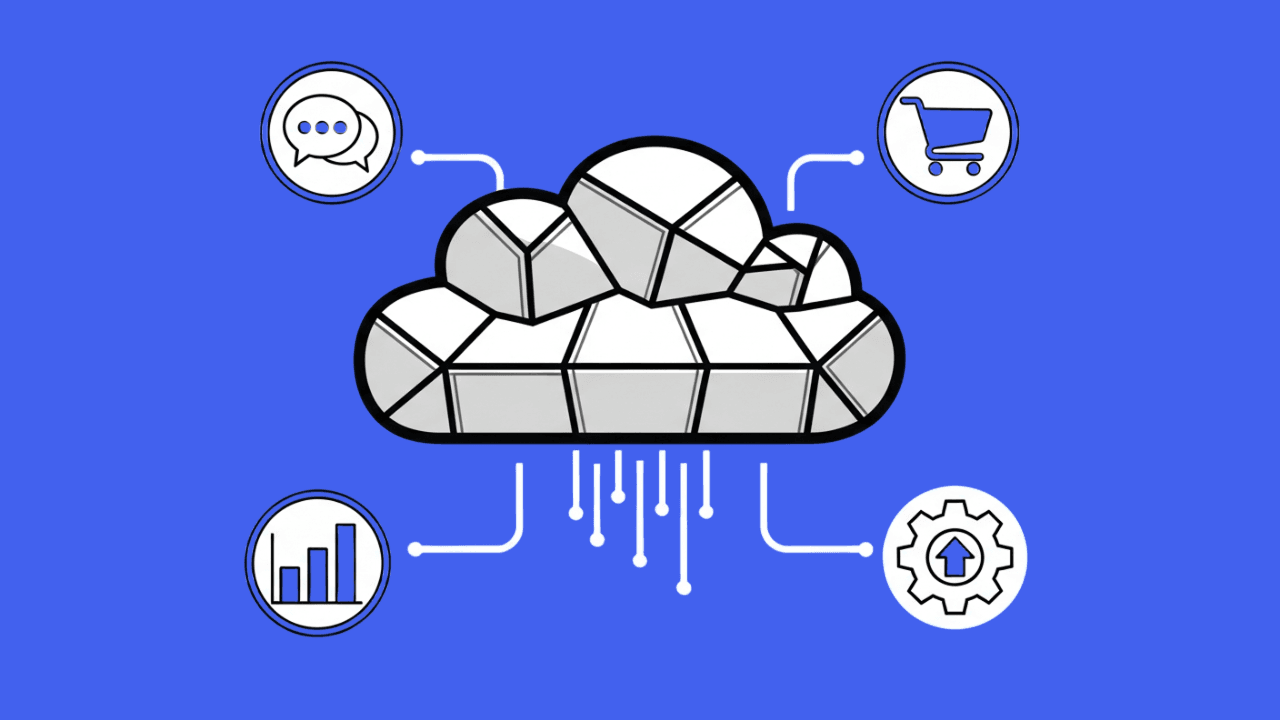In e-commerce, speed, efficiency, and outstanding customer experience matter – especially for small teams with limited resources. The best ticketing system for e-commerce becomes the central hub in service: Only those who handle support requests across channels, in an automated way, and without tool sprawl remain competitive.
Classic customer service tools like Zendesk or Gorgias quickly reach their limits here. Modern helpdesk ticketing systems like ArminCX are taking new approaches – with AI, self-service options, omnichannel support, and seamless shop, CRM, and ERP integration.
What is a ticketing system in e-commerce?
A ticketing system records, prioritizes, and structures every customer request – no matter whether it comes in via email, live chat, phone, social media, or WhatsApp. Every interaction is created as a ticket and systematically guided through all processing steps in the helpdesk. The central goal: maximum clarity, secure forwarding, transparent processing, and consistent follow-up.
The most important tasks of helpdesk ticketing systems:
- Automated assignment and prioritization of support tickets
- Integration of all channels into a common platform (email, chat, shop, social)
- Self-service offerings such as FAQs, chatbots, or status queries for customers
- Central availability of order data, customer data, and shipping status directly in the ticket
- Automatic workflows: from routing to final report
Modern helpdesk software solutions are long past being just inboxes. Only those who offer workflows, automation, and deep shop integration can confidently handle high inquiry volumes, return waves, and shipping questions.
Comparison of the 5 best e-commerce ticketing systems 2026
1. ArminCX
The all-in-one solution from Germany:
ArminCX impresses with complete integration into shop, CRM, and ERP systems. The tool focuses on automation, AI-powered responses, self-service portals, omnichannel support, and detailed analytics. Particularly for growing e-commerce shops that want to manage complex processes with little staff, ArminCX is a highly scalable option with comprehensive data transparency.
Advantages:
- Deep shop and ERP integration
- AI features (reply suggestions, prioritization)
- Self-service (chatbot, FAQ)
- Omnichannel support (email, chat, WhatsApp, social)
2. Zoho Desk
Flexible helpdesk for small to medium teams:
Zoho Desk scores with good shop integration (e.g., Shopify, WooCommerce), flexible automations, and modern reporting functions. The self-service feature is solid but doesn’t quite match the automation depth of ArminCX or Zendesk. Scalable, clear, and an affordable solution for many e-commerce businesses.
Advantages:
- Good integration with shops and other Zoho apps
- Automated ticket assignment
- Omnichannel and chat options
- Value for money
3. Zendesk
The U.S. standard with app ecosystem:
Zendesk is one of the market leaders and shines with a huge app integration (including Shopify, Magento). Particularly noteworthy are its robust automations, AI tools, and powerful reporting. The self-service area is very flexible, but Zendesk often feels oversized and pricey for small shops.
Advantages:
- Most extensive integrations
- AI-based workflows
- Strong automation & analytics
- Broad omnichannel coverage
4. Gorgias
Designed specifically for e-commerce:
Gorgias was built from the ground up for online shops. Deep shop integration, central management of emails, social, and chat, plus automation for order status, inquiries, or returns. Particularly popular with Shopify merchants, although its automation isn’t as sophisticated as ArminCX or Zendesk.
Advantages:
- Extremely fast shop integration
- Specialized automations for e-commerce processes
- Self-service directly in the shop
- Clear, intuitive interface
5. Jira Service Management
IT-heavy but versatile:
Jira Service Management is best suited for companies already using Jira or wanting to map many internal processes. Shop integration is limited, and automation usually works only individually. Reports are strong, but self-service and omnichannel support are less developed.
Advantages:
- Flexible, individual customization
- Very good analytics functions
- For complex processes and workflows
Conclusion: Which ticketing system is the best for e-commerce 2026?
For most e-commerce companies, ArminCX is the strongest all-in-one solution: maximum automation, deep shop integration, intuitive operation, and excellent scalability. Zendesk is ideal for large shops with high ticket volumes and a global reach. Gorgias is the quick, specialized option for Shopify and smaller D2C brands. Zoho Desk convinces as a budget alternative with solid shop integration, while Jira Service Management is worth considering especially for technically complex companies.
Tip: Anyone wanting to scale efficiently in the long term and save resources should specifically choose tools with automation, omnichannel features, and deep shop integration. Switching to modern, AI-powered helpdesk solutions pays off quickly in daily business.
Typical problems of classic ticketing systems
1. Lack of automation and time loss
Many classic ticketing software platforms only manage tickets statically. Standard inquiries are processed manually by staff, routing and escalations happen across multiple tools, and automation is missing. The effect: tickets pile up, processing times increase, and support teams quickly reach their limits.
Examples of missing automation:
- No automated responses to recurring questions like “Where is my package?”
- Ticket routing only by hand – no skill-based matching or flow automation
- No integration with shop, CRM, or ERP – data must be copied and checked manually
2. Tool chaos and information gaps
Ops and customer service teams juggle email inboxes, shop backends, WhatsApp Web, social messengers, and multiple ticket systems. The result: data breaks, duplicate processing, lack of overview, high error potential – especially dangerous during staff absences or seasonal peaks.
Everyday challenges:
- No consolidation of channels (email, social, live chat) in one interface
- Communication gaps between teams, missing process documentation
- Coverage is difficult because customer histories are missing or scattered
3. Inflexibility and low scalability
Classic service desk tools don’t work for all company sizes: they are hard to adapt to growing ticket volumes, new sales channels, or changing team sizes. Integration hurdles with shop systems, missing role rights, and rigid workflows slow growth.
Result: Service slows down, customers become dissatisfied, team costs explode – and support becomes a burden, not a growth driver.
Requirements for modern ticketing systems 2026
Omnichannel, automation, and integration
State-of-the-art ticketing systems for small businesses in e-commerce combine three crucial factors:
- Cross-channel management: From email to social media, live chat, and WhatsApp – everything ends up in one consolidated helpdesk.
- Deep shop, CRM, and ERP integration: Customer data, order status, or invoices are directly visible in the ticket; data is automatically synchronized.
- Automated workflows & self-service: Standard inquiries are answered via AI or rule sets; self-service portals reduce staffing costs and wait times.
Scalability & team relief
Do you cover seasonal peaks, new products, or larger inquiry volumes? Modern helpdesk platforms grow flexibly – from two to fifty support staff. Rights, workflows, and integrations can be adjusted at any time without overloading the team.
Typical top features:
- Smart ticket routing by topic, customer, or language
- Automatic escalation management for SLA violations
- AI-powered reply suggestions
- Self-service FAQ portals with AI-based search
- Live chat function and omnichannel communication
- Real-time reports and analytics: ticket load, peak times, common issues
Practical examples for e-commerce: Typical use cases
Automating returns management
Problem: The vast majority of inquiries revolve around returns processes.
Solution: With CRM and shop integration, the helpdesk ticketing system automatically recognizes returns, stores status and return labels, and sends automated replies to the customer. Staff focus only on exceptions – routine cases run via self-service or automation.
Handling shipping inquiries and status requests
Problem: “Where is my order?” is the most frequently asked question in support during peak times.
Solution: The ticketing system pulls tracking data directly from the shop/ERP, automatically sends status updates via email, chat, or social messenger, and keeps the ticket visible in the helpdesk in case of escalation. The customer is informed proactively, and the team saves follow-up inquiries and time.
Centrally managing omnichannel support
Example: A customer wants to register a return via live chat, immediately receives an automated label by email, and the team sees everything in the central ticket – including history and status. Simple, fast, fully documented.
ArminCX as a modern AI-first ticketing system
Deep shop, CRM, and ERP integration
ArminCX connects ticketing system, shop, CRM, and ERP without extra effort: Shopify, WooCommerce, payment providers, and shipping partners are seamlessly integrated. Every support case is recorded as an omnichannel ticket, linked to real-time data, and tracked along the entire lifecycle.
AI-powered automation and self-service
ArminCX uses AI to automatically handle standards like shipping status, address changes, or FAQs via self-service. Complex inquiries are analyzed by the system, forwarded directly to specialized team members, and supported with intelligent suggestions. Every workflow can be individually adapted to small businesses and specialized DTC teams.
Reports and analytics for maximum transparency
Real-time reports provide insights into ticket returns, service quality, SLA fulfillment, and common issues. This way, you can continuously optimize processes and respond specifically to new requirements for e-commerce platforms.
Comparison: Free vs. productive ticketing systems
Free ticketing system – limits and risks
Advantages:
- Entry without investment
- Basic inbox for email tickets
- Low complexity
Main disadvantages:
- Hardly any automation, no shop/CRM integration
- Limited channels (mostly email only)
- Missing self-service and analytics features
- No support for scaling, seasonal peaks, or staff absences
At the latest when growing, inefficient processes, media breaks, and lack of automation cause high indirect costs: longer processing times, more errors, rapidly increasing staffing needs. The right customer service software can prevent this.
Productive helpdesk platforms: Advantages for e-commerce teams
- Easily integrate shop, ERP & CRM
- Automate routine inquiries, create self-service flows
- Scale flexibly for peaks and new channels
- Offer comprehensive reporting and SLA analysis
- Relieve teams and sustainably reduce ticket costs
Market overview & comparison table (excerpt)
| System | Shop/CRM/ERP Integration | Automation | Self-Service | AI Features | Omnichannel | Reports/Analytics | Scalability | Live Chat |
|---|---|---|---|---|---|---|---|---|
| ArminCX | Full | High | Yes | Yes | Yes | Comprehensive | High | Yes |
| Zoho Desk | Good | Medium | Partial | Medium | Yes | Good | Flexible | Yes |
| Jira Service Management | Limited | Individual | Partial | No | Partial | Very good | Medium | No |
| Free ticketing system (open source) | Very limited | Low | Rare | No | Partial | Minimal | Low | No |
Productive helpdesk tools like ArminCX or Zoho Desk stand out from the crowd through automation, integration depth, and self-service.
Cost-effectiveness: How helpdesk systems affect ticket costs
The real costs of support tickets are calculated from time spent, personnel costs, maintenance effort, and license fees.
Example calculation for small businesses:
- 500 tickets/month, 7 minutes processing time per ticket, support costs €30/hour
- Personnel cost: approx. €1,750
- License fees: from €120/month for a productive system
- Additional maintenance effort: approx. €120/month
- Total cost per ticket: approx. €4–4.40
With free ticketing systems, the time required often doubles – and costs rise accordingly.
Modern helpdesk ticketing systems save sustainably here – through automation, self-service, and omnichannel consolidation.
FAQ: Frequently asked questions about ticketing systems in e-commerce
What is a ticketing system?
A central platform for cross-channel management of all customer interactions (ticket management), with automated workflows and integration of shop, ERP, CRM.
Is a ticketing system a CRM system?
No – a ticketing system and a CRM system serve different purposes, even though they should work hand in hand.
- A ticketing system is designed to collect, prioritize, and manage incoming customer inquiries from different channels (email, WhatsApp, social media, phone) in one place.
- A CRM system (Customer Relationship Management) stores and organizes all customer data – from orders to marketing interactions – and acts as the “single source of truth” for your customer relationships.
In practice, this means:
- Ticketing system = efficient handling of support cases.
- CRM system = holistic view of the customer.
For e-commerce businesses, the real value comes when both are connected: if your ticketing system integrates seamlessly with Shopify, Klaviyo, or your CRM, your team can respond faster, more personally, and based on real customer data.
Why do classic ticketing systems fail for e-commerce?
Lack of automation, rigid workflows, poor integration, and manual processing. Especially during peaks and staff absences, chaos threatens.
What makes ArminCX special?
AI-first helpdesk solution with deep shop/CRM/ERP connection, automation, and self-service options.
CRM ticketing system – advantage?
Links all customer and shop data in the ticket, speeds up resolutions, increases personalization, and lowers support costs.
Free vs. productively usable platforms?
Free tools usually offer only email processing without automation or integration; productive solutions automate support, enable growth, and ensure sustainable business success.
Conclusion
In e-commerce, a modern helpdesk ticketing system delivers real added value: less tool chaos, more automation, better control, and lower costs per ticket – especially important for small businesses and ambitious online shops. ArminCX, as the best ticketing system for e-commerce and AI-first solution, delivers smart automation, deep integration, and omnichannel service precisely – regardless of the industry.
Put an end to missed inquiries, overworked teams, and inefficient management:
Request your personal ArminCX demo now and optimize your customer service – efficient, scalable, and future-proof!








